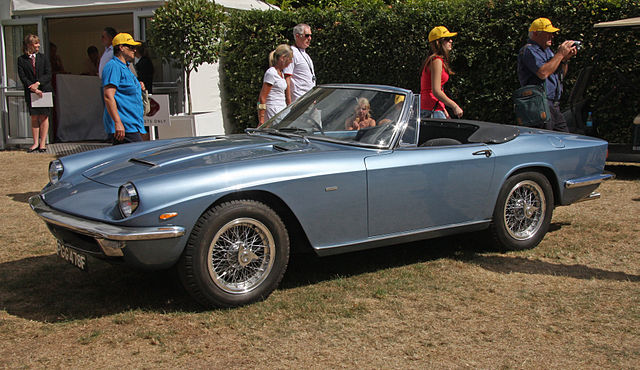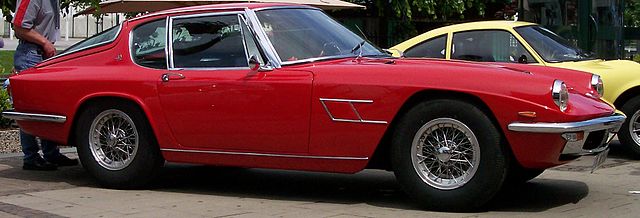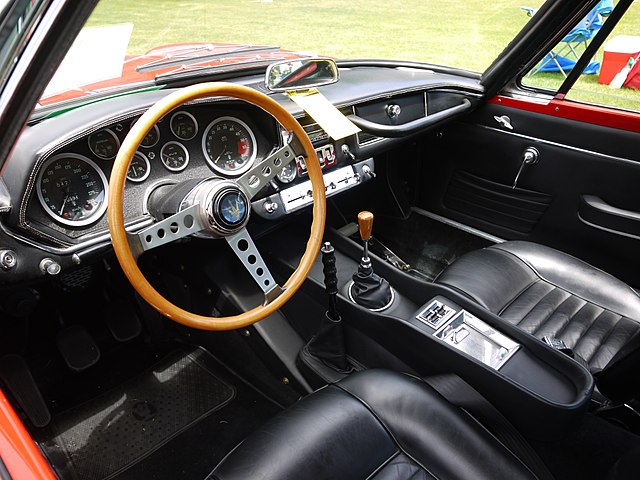
The Maserati Mistral is a two-seater grand tourer, introduced by the Italian car manufacturer Maserati in 1963. This model was crucial for Maserati as it represented the end of one era and the beginning of another, being the last in the line of Maserati GTs powered by the famous inline-six engine that was first used in the Maserati 350S.
Design Evolution
The Mistral was designed by Frua, a notable Italian car designer. Its design was a departure from its predecessors, featuring a more angular and sleek body, which was quite modern for its time. The car’s appearance is distinguished by its elongated front hood and short rear deck, embodying the classic sports car proportions.
Naming and Initial Reception
The naming of the Mistral continued Maserati’s tradition of naming their models after famous winds, underlining the speed and power inherent in the brand’s image. Upon its debut, the Mistral was well-received for its elegant design and impressive performance, setting a high standard for future grand tourers.
Performance and Engineering

Engine Specifications
Initially equipped with a 3.5-liter inline-six engine, the Mistral offered 235 horsepower, which was substantial for the early 1960s. Throughout its production run, Maserati also offered 3.7-liter and 4.0-liter versions of the engine, the latter producing up to 255 horsepower, enhancing its appeal among sports car enthusiasts.
Transmission and Handling
The Mistral came with a five-speed manual ZF transmission that was praised for its smooth and precise gear changes, enhancing the driving experience. The car’s handling characteristics were supported by independent front suspension and a live rear axle, typical of high-performance vehicles of that era.
Braking and Safety Features
For braking, the Mistral was equipped with disc brakes on all four wheels, a feature not universally standard at the time, which helped it stand out for its safety and advanced technology.
Production and Variants

Manufacturing Details
Over its seven years of production, the Mistral saw several updates and modifications. A total of 828 coupés and 125 spyders (convertibles) were produced, making it a relatively limited run in terms of classic cars.
Body Variants
The majority of Mistrals were coupés, but the spyder variant, also designed by Frua, is particularly sought after today due to its rarity and open-top design, which offers a more engaging driving experience.
Special Editions and Unique Features
While there were no official special editions of the Mistral, individual cars often featured unique color schemes and interior fittings, catering to the bespoke tastes of Maserati’s clientele during the 1960s.
Legacy and Impact on Maserati

Influence on Subsequent Models
The Mistral set a design and performance standard that influenced later Maserati models. Its emphasis on luxury and power continued to shape Maserati’s identity in the sports car market.
The End of an Engine Era
As the last model to use the celebrated Maserati inline-six engine, the Mistral marked the end of a significant chapter in Maserati’s engineering history. The company transitioned to using V8 engines in later models, moving towards more power and torque.
Cultural Impact
The Mistral has appeared in various films and television shows, cementing its status as a symbol of 1960s luxury and performance. It is often associated with a glamorous lifestyle, making it a favorite among collectors who appreciate both its aesthetics and its cultural significance.
Collectibility and Market Today

Rarity and Desirability
Given its limited production numbers and the distinction of being the last inline-six Maserati, the Mistral is highly prized among collectors. Well-preserved examples, especially the 4.0-liter variants and the spyder models, are particularly valuable.
Current Market Values
The market values for Maserati Mistrals can vary significantly based on their condition, history, and specific model variant. Pristine examples can fetch high prices in classic car auctions and private sales.
Maintenance and Ownership Challenges
Owning a Mistral requires a commitment to maintenance and care, as parts can be scarce and expensive. However, for enthusiasts, the prestige and joy of driving such a classic outweigh these challenges.
In conclusion, the Maserati Mistral not only captures the essence of Italian craftsmanship and performance but also stands as a testament to a transitional period in automotive history. Its enduring appeal among classic car enthusiasts underscores its significance and ensures its place in the annals of automotive legends.
